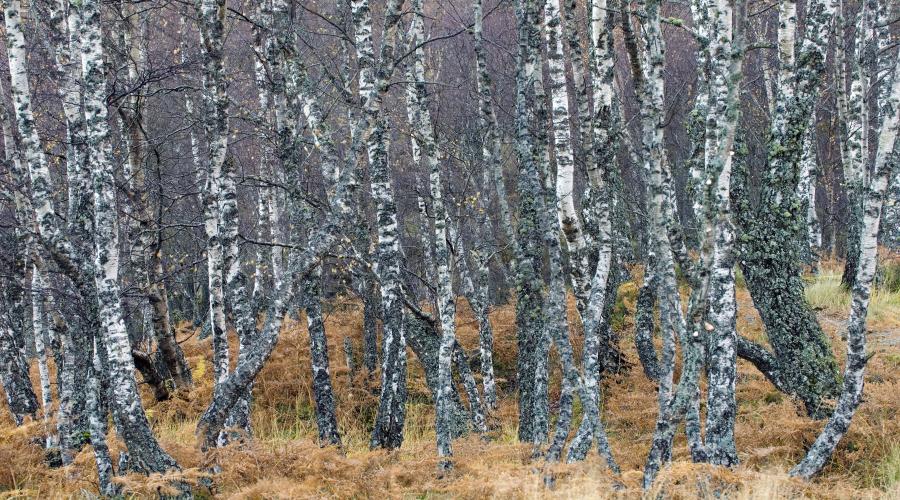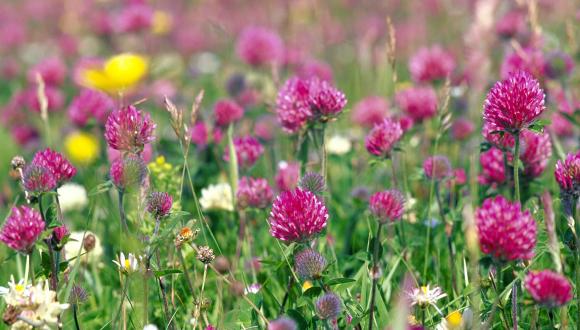
Birchwood
Birchwood is our most widespread and extensive type of woodland, growing in large swathes on more acid, infertile upland soils.
Three birch species are native to Britain:
- downy birch – dominates the cool, wet and windy climate of the north-west Highlands, and forms a canopy that’s rarely more than 10m high
- silver birch – dominates the cool boreal climate of the east and central Highlands
- dwarf birch – grows no taller than a low shrub in the montane scrub habitat
As pioneer trees, birches can rapidly colonise disturbed ground to form even-aged woods. Young birches may regenerate onto adjacent, previously unwooded areas, often in response to fire and changes in grazing pressure.
Upland birchwoods are included on the Scottish Biodiversity List.
Other flora and fauna
Birchwoods on poorer soils contain few woody associates other than rowan, the occasional holly and sessile oak, and, locally, Scots pine.
More fertile sites may feature:
- rowan
- ash
- aspen
- alder
- goat willow
- gean
- bird cherry
- juniper
- hazel
- hawthorn
- blackthorn
Juniper sometimes forms an understory in birchwoods of the eastern Highlands. Aspen occurs within upland birchwoods where mineral soil is present, often as small groups and rarely as large stands.
On all but the most acidic sites, birch ‘improves’ the soil to allow a grass-herb flora to develop on sites previously dominated by dwarf shrub heath.
Very few plant species only live in birchwoods. But birchwoods do favour the growth of grasses and herbs that are less common outside woods. They also support a very rich range of mosses and liverworts (bryophytes), including many rarities in western woods.
Some northern plants like chickweed wintergreen and globeflower (in ungrazed woods) are strongly associated with Highland birchwoods.
Birchwoods provide valuable habitat for:
- woodland birds – e.g. wood warbler, redstart, black grouse
- juniper – a UK Biodiversity Action Plan priority vascular plant species
- pearl-bordered fritillary butterfly
- aspen hoverfly
The wood itself rots quickly and provides valuable dead wood habitat for fungi, beetles and hole-nesting birds.
Explore Scotland’s birchwoods
You can visit some great examples of this woodland type on National Nature Reserves (NNRs).
Read about the birchwoods on:




